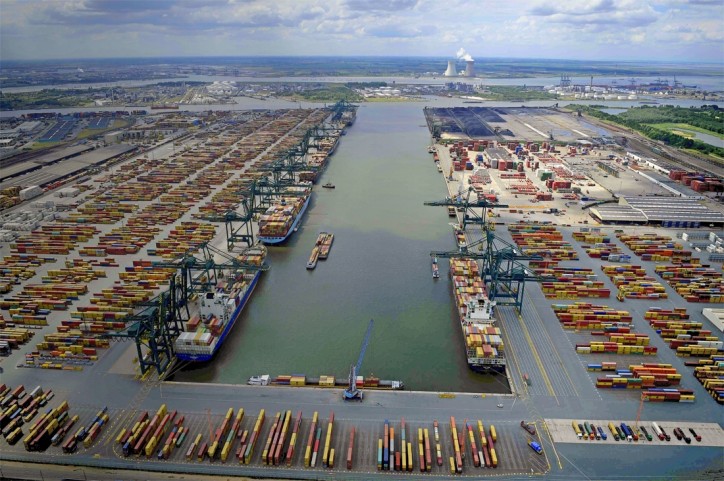68.1 million tonnes of cargo were transported between the seaport of Antwerp and Germany during 2016. This represents growth of approx. 4 million tonnes or 6.1 percent compared to the previous year. Thus Europe’s second-largest seaport is continuing its growth course as an important hub for German industry. While truck traffic rose by 4.3 percent in terms of tonnage, transportation by inland waterway vessel increased by 7.3 percent and railway transport services grew by as much as 8.3 percent.

Although trucks continue to occupy the leading position within the modal split, they are losing shares in percentage terms to railway and inland waterway transports. In 2016 the breakdown of the modal split of transports between Germany and Antwerp was as follows: 36.7 percent of goods were transported via the Rhine waterway (2015: 36.3 percent), 17.2 percent by rail (2015: 16.8 percent) and 46.1 percent by road (2015: 46.9 percent).
“We’re expecting a significant increase in goods traffic with Germany in the next few years too. The current figures confirm our commitment to developing new multimodal solutions in order to cope with this growth rate,” says Dr Dieter Lindenblatt, the Antwerp Port Authority Representative for Germany.
Expanding intermodal solutions
Experts are expecting cargo traffic between Antwerp and Germany to grow to a figure of more than 90 million tonnes per annum by 2030. The Antwerp Port Authority is therefore focusing on expanding marketable intermodal transport links and establishing regional hubs where goods from destinations further inland can be consolidated in order to provide more efficient transport operations.
This is being implemented, for example, in the form of international tender initiatives, in which selected projects also receive limited financial support from the Port of Antwerp. New rail shuttles were already put into service at the beginning of this year as the result of a tender procedure to boost rail traffic to the Rhine/Main and Rhine/Ruhr regions.
Project proposals for increasing the efficiency of existing road transport flows heading to ports and modal split campaigns to shift consignments to railway and inland waterway services can still be submitted up to 11 August 2017.You can obtain further information on the current project tender procedure entitled “New or improved transport solutions for freight traffic” using the following link: www.portofantwerp.com/en/projectcall_mobilitysolutions
In cooperation with the Logistics Competence Centre in Prien, the Port of Antwerp is currently conducting a survey among its customers in Bavaria and in Antwerp with the goal of creating the basis for a permanent, competitive daily rail link between the Port of Antwerp and Munich as well as other industrial and logistics centres in Bavaria.
Important expansion of infrastructure
The forecast growth in traffic flows between Germany and Antwerp can only be successfully managed by shifting goods transports off the roads and onto inland waterways and rail. In addition to upgrading inland waterway routes, it is therefore also essential to develop the rail infrastructure in good time.
In addition to upgrading inland waterway routes, it is therefore also essential to develop the rail infrastructure in good time.
At a “Belgium evening” held in Berlin in May and supported by German-Belgian Member of the German Bundestag Dr Daniela De Ridder (SPD), Port President Marc Van Peel took the opportunity to draw the attention of members of parliament and guests from Germany and Belgium once again to important infrastructure projects.
Source: Port of Antwerp